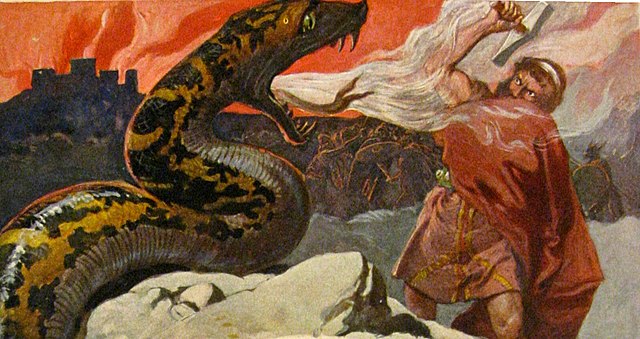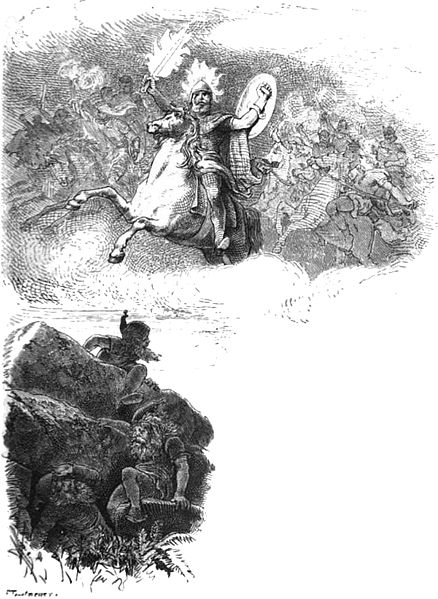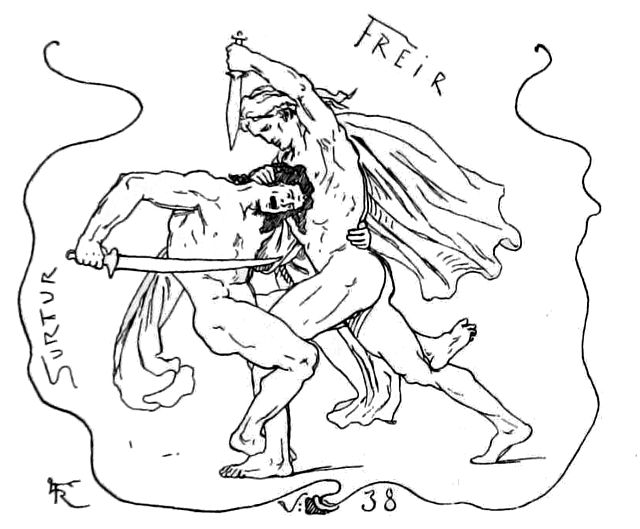In Norse mythology, Vígríðr or Óskópnir is a large field foretold to host a battle between the forces of the gods and the forces of Surtr as part of the events of Ragnarök. The field is attested in the Poetic Edda, compiled in the 13th century from earlier traditional material, and in the Prose Edda, written by Snorri Sturluson in the 13th century. The Poetic Edda briefly mentions the field as where the two forces will battle, whereas the Prose Edda features a fuller account, foretelling that it is the location of the future death of several deities before the world is engulfed in flames and reborn.
The god Odin battles the wolf Fenrir while other deities and their combatants fight in the background on the field Vígríðr in an illustration (1905) by Emil Doepler.
The battle at Vígríðr raging behind them, the serpent Jörmungandr confronts the god Thor in an illustration (1905) by Emil Doepler.
In Norse mythology, Surtr, also sometimes written Surt in English, is a jötunn. He is the guardian of Muspelheim which is along with Niflheim, the only two realms to exist before the beginning of time, and the greatest of the fire giants. Surtr is attested in the Poetic Edda, compiled in the 13th century from earlier traditional sources, and the Prose Edda, written in the 13th century by Snorri Sturluson. In both sources, Surtr is foretold as being a major figure during the events of Ragnarök; carrying his bright sword, he will go to battle against the Æsir, he will battle the major god Freyr, and afterward the flames that he brings forth will engulf the Earth.
The Giant with the Flaming Sword (1909) by John Charles Dollman
Surtr with the Flaming Sword (1882) by F. W. Heine, based on a plaster frieze designed by Friedrich Wilhelm Engelhard (1859)
Battle of the Doomed Gods (1882) by Friedrich Wilhelm Heine
The battle between Surtr and Freyr at Ragnarök, illustration (1895) by Lorenz Frølich






